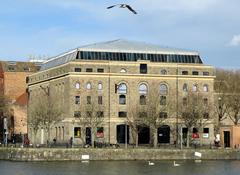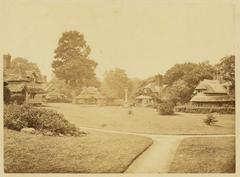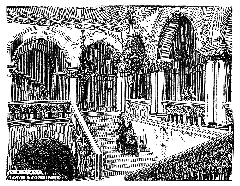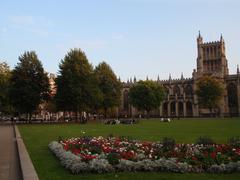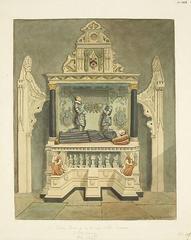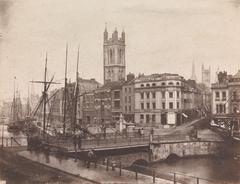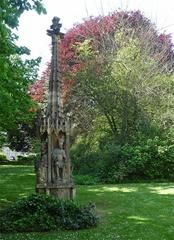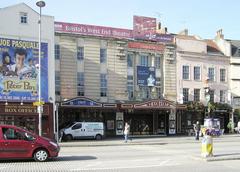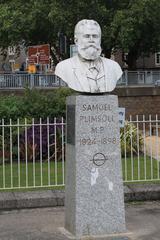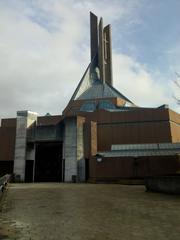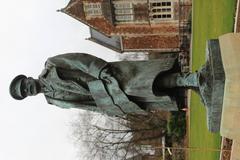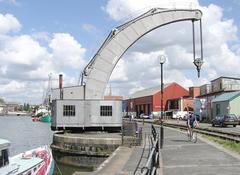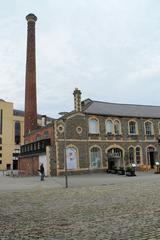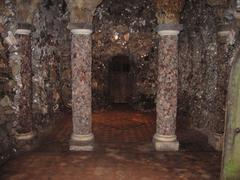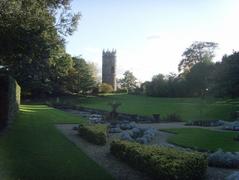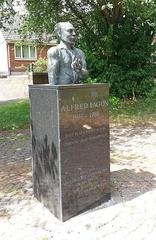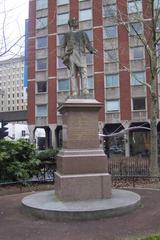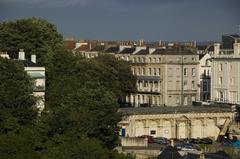
Stockwood, Bristol, United Kingdom: Visiting Hours, Tickets, and Travel Guide
Date: 04/07/2025
Introduction: Stockwood’s Heritage and Significance
Stockwood, located in the south-east of Bristol, United Kingdom, is a destination where natural heritage, vibrant community life, and historical layers converge. Once characterized by rural farmland and ancient woodlands, Stockwood’s transformation into a lively suburb after World War II has not diminished its distinctive identity. Today, it offers visitors a unique mix of accessible green spaces—such as the Stockwood Open Space nature reserve—archaeological sites like the Iron Age Stockwood Hillfort, and commemorative landmarks including the Stockwood Monument.
Stockwood is especially appealing to nature lovers, with wildflower meadows, woodlands, and ponds supporting a wealth of wildlife. Community amenities, sports clubs, and local events foster engagement and participation, making Stockwood a welcoming place for both residents and visitors.
This guide provides comprehensive, non-duplicative details on Stockwood’s history, key attractions, visiting hours, accessibility, transport options, and practical travel tips, equipping you to make the most of your visit to this multifaceted Bristol suburb.
For further details about nature conservation in Stockwood, visit the Avon Wildlife Trust Stockwood Open Space page. For heritage sites, refer to the Bristol Heritage website, and for community events, check the Stockwood Community Hub.
Table of Contents
- Introduction
- Early History and Rural Origins
- Urban Expansion and Suburban Development
- Stockwood Open Space: A Nature Reserve with History
- Community Evolution and Social Life
- Heritage Conservation and Modern Identity
- Stockwood in Bristol’s Broader Historical Context
- Practical Visitor Information
- Visiting Stockwood Open Space: Attractions, Nature, and Visitor Information
- Exploring Stockwood Hillfort: Visiting Hours, Tickets, and Local Attractions
- Visitor Information and Practical Tips for Stockwood Monument
- Frequently Asked Questions (FAQs)
- Conclusion
- References and Official Links
Early History and Rural Origins
From Farmland to Flourishing Flora
Stockwood’s landscape has long been shaped by its rural heritage, with lime-rich clay soils supporting wildflowers, ancient woodland, and rare species like Bath asparagus. Ilsyngrove, an ancient woodland within the area, is particularly renowned for its bluebells and yellow archangel, reflecting Stockwood’s enduring ecological significance.
Stockwood on Historic Maps
Historical maps from the 19th and early 20th centuries depict Stockwood as a sparsely populated countryside with scattered farmsteads and winding lanes, retaining its rural character well into the modern era (Francis Frith).
Urban Expansion and Suburban Development
Post-War Growth and Housing
Stockwood’s transformation accelerated in the 1960s with the development of the upper Stockwood estate—primarily private homes and accommodation for the elderly—reflecting Bristol’s response to post-war housing needs (Bristol City Council). Meanwhile, lower Stockwood features earlier council estates in wooded valleys, offering panoramic city views and popular vantage points for the Bristol International Balloon Fiesta.
Stockwood Open Space: A Nature Reserve with History
From Working Farm to Protected Green Space
Once agricultural land, Stockwood Open Space is now a 60-acre nature reserve jointly managed by Avon Wildlife Trust and Bristol City Council. It is designated a Site of Nature Conservation Interest, protecting meadows, hedgerows, ancient woodland, and ponds. Visitors can encounter butterflies, birds of prey, and amphibians, thanks to ongoing conservation work (Avon Wildlife Trust).
Visiting Hours and Access
- Opening Hours: Open daily, dawn to dusk.
- Admission: Free; no tickets required.
- Entrances: Accessible from Hungerford Gardens, The Coots, Whittock Road, Stockwood Road, and Holsom Close.
- Accessibility: Paths are generally suitable for most visitors, though terrain varies.
- Parking: Limited street parking; public transport is encouraged.
Community Evolution and Social Life
Amenities and Community Centre
Stockwood’s population of around 11,800 enjoys amenities like the Stockwood Community Centre, which houses a library, gym, café, and event spaces (Stockwood Community Hub). Local churches, clinics, and shops contribute to the community’s welcoming atmosphere.
Sport and Recreation
Sports thrive in Stockwood, with clubs like Bristol Telephones F.C., Bristol Telephone Area RFC, and a women’s football team based at the Blueprint Stadium (Bristol City Council Sports Facilities).
Heritage Conservation and Modern Identity
Stockwood excels in preserving its social and natural legacy, with volunteer groups supporting the upkeep of its green spaces. Recent redevelopment of former pubs into housing highlights the area’s ongoing urban evolution while retaining its character.
Stockwood in Bristol’s Broader Historical Context
Stockwood’s shift from rural fields to a modern suburb mirrors broader trends in Bristol’s urbanization. Its proximity to the Bristol and North Somerset Railway cycleway connects visitors to the city’s industrial past (Bristol City Council Cycling), while its green spaces offer a tranquil contrast to city life.
Practical Visitor Information
Getting There
- By Public Transport: Bus routes (including Wessex Bus, 42, and 44) serve Stockwood; check current timetables.
- By Car: Limited street parking; consider public transport or park responsibly nearby.
Visitor Tips
- Wear comfortable walking shoes.
- Dogs are welcome but must be kept on a lead.
- No entry fees for nature reserves.
- Join community events or sports fixtures for a fuller local experience.
Nearby Attractions
- Bristol International Balloon Fiesta (viewpoints from Stockwood)
- Bristol and North Somerset Railway cycleway
- Bristol historical sites
Visiting Stockwood Open Space: Key Attractions and Information
Overview and History
The 60-acre Stockwood Open Space, managed since 1981 by Bristol City Council and Avon Wildlife Trust, was once farmland and is now a hub for biodiversity and recreation (Bristol Barkers; Avon Wildlife Trust).
Landscape and Features
- Ancient Woodland & Wildflower Meadows: Seasonal displays attract pollinators.
- Restored Orchard: Community apple orchard, especially popular in autumn.
- Ponds: Home to amphibians and aquatic insects.
- Accessible Paths: Whitchurch Way (former railway) is suitable for wheelchairs and cyclists (This Bristol Brood).
Wildlife and Conservation
Local groups, such as Friends of Stockwood Open Spaces, help preserve habitats and monitor wildlife (Avon Wildlife Trust).
Facilities and Accessibility
- Entrances: Multiple, including Stockwood Road and The Coots.
- Parking: Free on-street parking.
- Paths: Accessible for wheelchairs and buggies.
- Play Area: Near Hungerford Gardens entrance.
- Dog Policy: Dogs must be on leads in certain areas.
Activities
- Walking, cycling, wildlife watching, photography, and picnics.
- Seasonal foraging for apples and berries.
- Regular community events, such as workshops (Eventbrite).
Nearby Attractions
- Bristol Zoo Project (Visit Bristol)
- Aerospace Bristol
- Cheddar Gorge and Wookey Hole
- Bristol and Bath Railway Path
Exploring Stockwood Hillfort: Visiting Hours, Tickets, and Local Attractions
History and Cultural Significance
Stockwood Hillfort is an Iron Age site, significant for its earthworks and strategic vantage point. It remains an emblem of Stockwood’s long-standing community and archaeological importance.
Visiting Hours and Tickets
- Hours: Open daily, 9:00 AM – 6:00 PM.
- Admission: Free.
- Guided Tours: Available weekends and public holidays; tickets bookable online (Bristol Heritage) or at the Community Hub.
Getting There
- Bus: Routes 42 and 44.
- Car: Parking at Manor Farm Community Hub.
- Bike: Bike racks provided.
Accessibility
- Wheelchair-friendly main paths; some uneven terrain.
- Accessible restrooms at Community Hub.
- Assistance dogs welcome.
Amenities and Events
- Nearby youth clubs and activity centres.
- Special events: archaeological workshops, reenactments, and festivals.
Photography
- Panoramic views over Bristol, ideal for landscape photography.
Community Engagement
- Supported by local organizations and volunteers.
Visitor Information and Practical Tips for Stockwood Monument
About the Monument
The Stockwood Monument is a local heritage landmark, surrounded by green spaces, with plaques and occasional guided tours explaining its history.
Visiting Hours and Tickets
- Hours: Open daily, 8:00 AM to sunset.
- Admission: Free.
- Tours: Weekends/selected weekdays; book via Bristol Heritage.
Getting There
- Bus: Accessible routes with raised pavements (Visit Bristol – Accessible Travel).
- Train: Keynsham or Bristol Temple Meads + bus/taxi.
- Car: Free parking, including Blue Badge bays (Bristol City Council – Parking).
- Taxi: Wheelchair-accessible options (Bristol City Council – Accessible Taxis).
Nearby Amenities
- Shopping: Local stores and Co-op (Ocean Home – Stockwood Guide)
- Dining: Fish & chip shop and further options in Knowle/Hengrove (Area Hive – Stockwood)
- Healthcare: Local clinics.
Outdoor and Photo Opportunities
- Adjacent to Stockwood Open Space Nature Reserve.
- Cycleways and walking trails; Brislington Brook and Nightingale Valley nearby.
Accessibility
- Wheelchair-accessible paths and public transit.
- Community transport and mobility aids available.
- Blue Badge parking.
Safety
- Active neighborhood watch groups; remain aware in secluded spots (Area Hive – Stockwood).
Frequently Asked Questions (FAQs)
Stockwood Open Space:
- Hours: Dawn to dusk, daily.
- Entry Fee: None.
- Facilities: Library, gym, café, community rooms.
- Dogs: Allowed on leads.
- Getting There: Multiple bus routes.
Stockwood Hillfort:
- Entry Fee: Free; guided tours ticketed.
- Dogs: Assistance dogs welcome; other dogs on leads.
- Picnics: Permitted.
- Family-Friendly: Yes; safe pathways, nearby youth activities.
- Tours: Book online or at Community Hub.
Stockwood Monument:
- Fee: Free access.
- Tours: Book in advance.
- Accessibility: Wheelchair-friendly.
- Events: Occasional; check Bristol Heritage site.
- Best Photo Times: Early morning/late afternoon.
Conclusion & Recommendations
Stockwood blends historical depth, ecological richness, and a lively community atmosphere. Its evolution from rural farmland to a modern suburb with preserved green spaces is a testament to Bristol’s commitment to balancing growth with conservation. Visitors enjoy free access to diverse habitats, archaeological landmarks, and inclusive facilities, all supported by a network of active community groups and convenient transport links.
Whether you’re exploring Iron Age history at Stockwood Hillfort, wandering the wildlife-rich trails of Stockwood Open Space, or reflecting at the Stockwood Monument, your visit is sure to be engaging and memorable. To enrich your experience, download the Audiala app for guided tours, real-time updates, and personalized recommendations across Bristol’s historical and natural sites.
For ongoing updates and resources, consult the official websites for the Avon Wildlife Trust, Bristol Heritage, and Stockwood Community Hub.
References and Useful Links
- Stockwood Open Space – Bristol City Council & Avon Wildlife Trust
- Avon Wildlife Trust – Stockwood Open Space
- Bristol Heritage – Stockwood Hillfort
- Bristol Heritage – Stockwood Monument
- Stockwood Community Hub Activities
- Eventbrite – Connecting in Neighbourhoods Workshop Stockwood July 2025
- Bristol City Council – Sports & Leisure
- Bristol Visitor Guide
- Francis Frith – Stockwood Historic Maps
- Ocean Home – Stockwood Area Guide
- Area Hive – Stockwood
For more images and interactive maps, refer to the official sites or download the Audiala app for a richer, more accessible travel experience.

